18th WMO Congress Takes Landmark Decisions
The World Meteorological Organisation (WMO) has realigned itself by passing numerous resolutions in June 2019. Particularly noteworthy are
The new Strategic Plan of WMO (2020–2023) reflects the requirements arising from the Agenda 2030, the Paris Agreement on Climate Change and the Sendai Framework for Disaster Risk Reduction. It enumerates three superordinate categories:
- Better preparation for hydrometeorological extremes, notably to prevent casualties and damages to critical infrastructure;
- Support in climate-friendly decision-making, to allow and improve adaptability and resilience against climate risks;
- Improving WMO services in the fields of weather, climate, and hydrology.
The adopted Governance Body Reform, much supported by Germany, is another milestone for WMO. The WMO’s existing structures have proven to be too inflexible and unable to react adequately to current developments. Instead of eight technical commissions, there will be two commissions in future, one for Infrastructure, Information Systems and Observations, and another one for Application and Services. A Scientific Advisory Panel, independently advising the Executive Council and the Congress concerning research issues, has also been established. Furthermore, a Technical Coordination Committee (TCC) and a Policy Advisory Committee (PAC) have been set up. The TCC will take on a key role and will coordinate the work of the two new technical commissions, the regional associations and research.
The adopted “Geneva Declaration – 2019: Building Community for Weather, Climate and Water Actions” calls for closer cooperation between the public, private and acedemic sectors and includes a commitment for the free exchange of weather data.
Prof. Dr. Gerhard Adrian, permanent German representative to WMO and Head of the Deutscher Wetterdienst, is the first German in the history of WMO to be elected President.
Hydrology has received reinforcement in the new structure – in spite of the abolition of the Hydrological Commission (CHy). The reinforcement is implemented by means of the new Hydrological Coordination Panel and the Hydrological Assembly, where the Heads of the National Hydrological Services (NHS) and the Hydrological Advisors (HA) of the Permanent Representatives of the Member States are represented and may bring in proposals for resolutions. The Director of the German Federal Institute of Hydrology (BfG), Dr. Esser, acts as NHS for Germany, while the Director of the ICWRGC, Harald Köthe, acts as HA. As hydrological advisor and representative of the BfG’s management, Mr. Köthe participated in the essential negotiations as a member of the German delegation.
In a panel discussion dealing with Water and Peace that was also attended by the German Ambassador Mr. von Ungern-Sternberg, there was consensus that water data are of central importance for the development of peacemaking water management solutions in regions with transboundary water resources. All panel members criticized the lack of one central voice for water within the UN system. They unanimously demanded better cooperation of the UN Family in the water sector. Ambassador von Ungern-Sternberg pointed out that water was becoming an increasingly important safety-relevant factor. WMO could become more important, as climate change and water crises were receiving more attention in world politics. However, WMO should not only rely on its scientific-technical skills, but should also improve its political communication.
The Hydrological Assembly and the Congress passed two pioneering hydrological resolutions, i.a. including the WMO’s 8 long-term hydrological goals. It highlighted the significance of the existing global water data centres and their coordinating mechanism (Global Terrestrial Network Hydrology – GTN-H) that has been under the ICWRGC’s mandate since 2017.
The new WMO resolutions on Earth System Research are also important for hydrology and freshwater management. They underscore the necessity for interaction of the water programmes of various UN-organisations and the weather, climate, water and ecosystem monitoring networks for the generation of seamless predictions and projections of future water resources.
[print-me target=”.print-wmo2019″ do_not_print=”.toggle .printomatic .noprint” title=”” alt=”Beitrag drucken / Print this article”]




